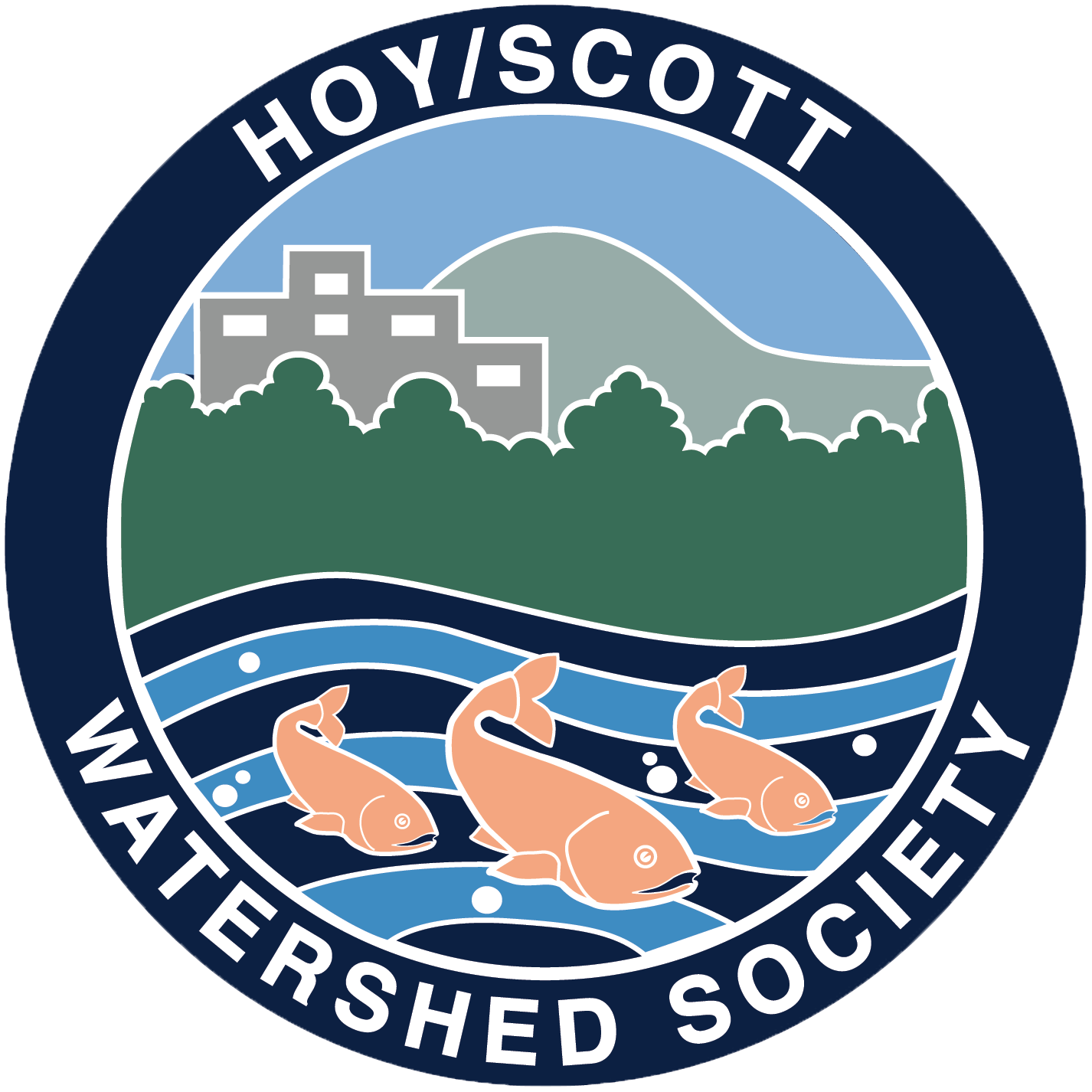When first ponded, the fry undergo a vital change – it takes some time (between 20-40 mins or more), but they eventually swim-up to the surface to take in air. Over a period, they will take several surface gulps of air that fill up their swim bladder allowing them to hold a position in the water (i.e. float). As the fry begin to stabilize and adjust to this new environment, we begin to feed them with food for their first time; previously as alevin, they fed off their yolk sacks.
Our fry along with wild salmon have developed dark bars on their sides by now, called parr marks. In a natural environment, these bars help them to camouflage with the gravel and blend in with their surroundings to hide from predators like birds. Coho fry within Hoy creek and other estuaries will be visible if you are to patiently wait and watch long enough in eddies and still pools.
As the weather improves, we find ourselves getting out to complete yard work, clean the exterior of the house, clean the car, among many other activities. With each of these activities, we should stop and think about where the fertilizer run-off goes, the same about the paint that fell off the fence or house during washing, the soap that removed the grime from the car and even the sand with some murky water that left the driveway bright grey once again. All of these are pollutants and we must each do our part to ensure these don’t end up in our watershed or elsewhere in the environment.
Also when taking a walk through the watershed on sunny days, remember how nice it is to be in the cool shade. Wild salmon in the creek including our hatchery fish rely on shade created from large boulders, overhanging bushes, tree stumps or fallen logs to keep the water cool. Wooded debris in the creek not only provides shade but food sources and also acts as a natural aerator to keep up the oxygen in the water for the fish to survive. Please remember to leave the branches, logs and creek banks the way they are found to ensure the creek remains stable, healthy and productive with life.
If you have questions or are interested in volunteering with the society, please contact us at hoyscottwatershed@gmail.com. Be sure to check out our Facebook page for more photos of our work and of nature along the watershed.




